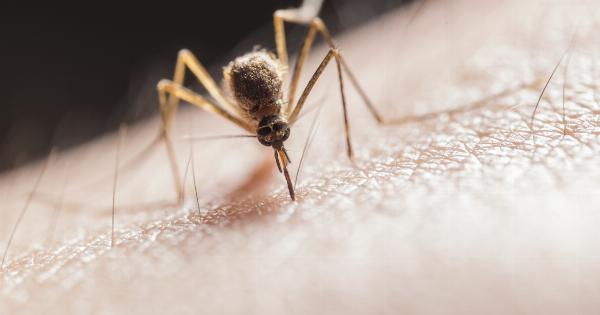Dengue fever is a viral disease transmitted by the Aedes mosquito. It is a leading cause of illness in tropical and sub-tropical regions of the world, with an estimated 50 to 100 million cases annually.
The World Health Organization (WHO) has declared dengue a global health threat, and with no vaccine or specific treatment available, combating the spread of dengue has become a major public health challenge.
The use of genetically engineered mosquitoes has been suggested as a potential solution to control the spread of dengue.
These mosquitoes are designed to be immune to dengue, which in turn, may reduce the number of mosquitoes capable of spreading the virus. In this article, we will explore genetically engineered mosquitoes and how they could potentially impact dengue prevention efforts.
What are Genetically Engineered Mosquitoes?
Genetically engineered mosquitoes are created by manipulating the DNA of the mosquitoes to change their traits. The idea behind genetically engineered mosquitoes is to introduce a genetic modification that would make the mosquitoes resistant to dengue.
Once released, the genetically modified mosquitoes would breed with the wild population, spreading the immunity throughout the population. The result would be a reduced number of mosquitoes capable of transmitting dengue, leading to a decrease in the number of dengue cases.
Scientists have been developing genetically engineered mosquitoes for several years, with several strains of genetically modified mosquitoes currently being tested in the field.
The most advanced of these mosquitoes are known as OX513A mosquitoes and were developed by the British biotech company Oxitec. OX513A mosquitoes have been engineered to carry a genetic modification that prevents them from reaching adulthood in the absence of a specific chemical.
This chemical, tetracycline, is added to mosquito breeding sites to allow the genetically modified mosquitoes to reach adulthood. The idea is that in the absence of the chemical, the genetically modified mosquitoes would die before they could reproduce, leading to a reduction in the mosquito population.
The Potential Benefits of Genetically Engineered Mosquitoes
The use of genetically engineered mosquitoes as a tool to control the spread of dengue has several potential benefits. First, they could reduce the number of dengue cases by decreasing the number of mosquitoes capable of transmitting the virus.
This reduction in the number of mosquitoes would, in turn, result in a reduction in the number of cases of dengue.
Second, genetically engineered mosquitoes could potentially be used to control the spread of other mosquito-borne diseases.
While the focus of genetically engineered mosquitoes has been on dengue, the same technology could potentially be used to combat diseases such as Zika and malaria, which are also transmitted by the Aedes mosquito.
Finally, the use of genetically engineered mosquitoes could be more cost-effective than other methods of mosquito control. Currently, mosquito control measures involve the use of pesticides or the use of mosquito nets.
While effective, these methods are expensive and require ongoing investment. The use of genetically engineered mosquitoes would be a one-time investment, with the potential to provide long-term benefits.
The Potential Risks of Genetically Engineered Mosquitoes
The use of genetically engineered mosquitoes is not without risks. One of the concerns surrounding genetically engineered mosquitoes is the potential impact on the environment.
While the OX513A mosquitoes have been modified to die before they can reproduce in the absence of tetracycline, there is a risk that the genetic modification could spread to wild mosquito populations, leading to unintended consequences.
Another concern is the potential for the genetically modified mosquitoes to have unintended effects on non-target species.
While the OX513A mosquitoes have been designed to only target the Aedes mosquito, there is a risk that other species of mosquito could be affected.
Finally, there are questions around the effectiveness of genetically engineered mosquitoes in controlling the spread of dengue.
While laboratory trials have shown promising results, there is limited data on the long-term impact of genetically engineered mosquitoes on dengue transmission in the field. It is also possible that the use of genetically engineered mosquitoes could lead to the emergence of new dengue strains that are resistant to the immunity provided by the genetically modified mosquitoes.
The Future of Dengue Prevention
Despite the potential risks, genetically engineered mosquitoes have the potential to play an important role in dengue prevention.
While more research is needed to fully understand the risks and potential benefits of genetically engineered mosquitoes, they represent a promising new tool in the fight against dengue.
As the global threat of mosquito-borne diseases continues to grow, it is important that we explore new and innovative ways to combat these diseases.
While there is no one solution to the problem of dengue, genetically engineered mosquitoes offer a promising new approach that could save countless lives and prevent millions of cases of dengue each year.
The Conclusion
The development of genetically engineered mosquitoes is a significant step forward in the fight against dengue. By creating mosquitoes that are immune to the virus, we have the potential to significantly reduce the number of cases of dengue worldwide.
However, while genetically engineered mosquitoes offer a promising new approach to dengue prevention, it is important that we proceed with caution and continue to monitor the potential risks and benefits of this technology.




























